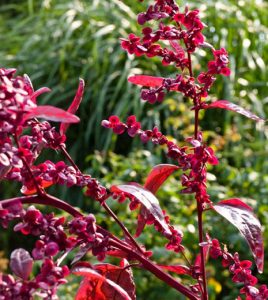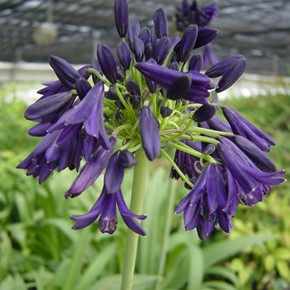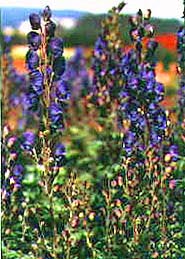
Atriplex hortensis Red Orach, USDA zone 5-9
I just began growing Red Orach, an Amaranth like looking plant that is beautiful, edible and ornamental to the extreme. The original seed source came from a ‘Red Plume’ cultivar, which can attain heights of between 4-6 feet.
There are three reasons to grow this beautiful late summer foliage firework.
1. Although it is supposedly wind pollinated, I found it to be heavily visited by bees for pollen.
2. As the Greek genus name implies ‘orach’ is an edible which can be used as a vegetable, raw in a salad, or cooked like spinach.
The red color of this form and or the cultivar ‘Red Orach’ does not lose color when cooked. It was commonly grown in Mediterranean regions from early times until spinach became the more favored leaf vegetable
3. Long term potential: perhaps its flower stalks can and should be used in summer floral arrangements.
Here in Sequim it flowers in mid to late summer and the seeds ripen in September. As this plant self sows, one should remove the seed heads before they become a weed. On the other hand, sprayed and dried the FALL seed pods are very attractive as a floral decoration.
This plant is easy to grow as a vegetable and does best if kept well growing with fertilizer and water to assure steady tender growth. One harvests when the plant is about a foot high. Otherwise you will find yourself with a five foot high eye popping specimen.
Given full sun and well drained soils this is an easy to grow plant and just think of the foliage fireworks this might add to your summer garden. I have found the near neon purple leaves to be a wonderful addition to tall lilies or purple flowering delphiniums or hardy agapanthus.
 Purple Agapanthus |
 Aconitum species |
Hardy to Canada you will find this a permanent addition to your self sowing vegetable garden. I like the spinach taste and it has 3X the amount of Vitamin C and a peppery taste that is very pleasant. If you keep it cut back it will provide salads all summer long.
A few additional notes: It has a tolerance for alkaline soils, so it can be a nice addition to the seaside garden. This native of Europe and Siberia finds a very welcome home here in Sequim WA.
For the adventurous baker one can also add the ground seed into breads. The meal mixed with flower makes for a very different tasting bread. Seeds are also used to make a blue dye, but should not be eaten raw. I found that even cooked it was very bitter. Never again.
Finally, although the plants are very attractive in the garden and add wonderful color to the garden and or salads, always cut them back to prevent formation of seeds or they will pop up in locations not intended. (If you would like some seed, please send me something intriguing (vegetable or other) to swap. I will send you some in the fall … or of something else if I have it. My address is on my ABOUT ME page.
A saftig queen bee would find a wealth of trade-able goodies!!!  |
 |
An excellent page on RED ORACH can be found here.
Another site also mentioned the pest resistance issue: “In my own garden in western Washington, slugs and pill bugs can be an issue. But I’ve found that orach is rarely ever bothered by these pests. This makes it a great “green” to grow if you have wet springs that result in slug issues.” And as far as aphids, they have never been a problem. Then again, I have a great many native predatory wasps.

This is gorgeous. I just received my Purple Orach seeds and I am growing them for cut flowers especially when they go to seed. Will this be comparable to the red in all the ways you described? I’m hopeful it will draw the bees to my berry patch so now I’ll plant it closer to them.
Thanks for all your articles they are so very informative.
Alethea, I suppose the ‘redness’ of the plant will depend upon the source and or your own propagation from the best you have.
Not sure about its use to attract bees to the berry patch as the flowers come much later than say Raspberries.
Plants that are great for that purpose might include the Chinese forget-me-not – Cynaglossum ??? Cynoglossum nervosum, amabile.
Curious thing though The UK gave it the Royal Horticultural Society’s Award of Garden Merit, yet others classify it as a weed.
It does spread, but so do many of the Award winning plants. It blooms with the apple trees and between the two, I cannot think
of a more nectar producing pairing.